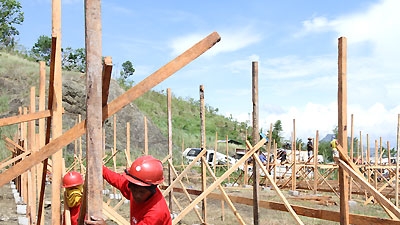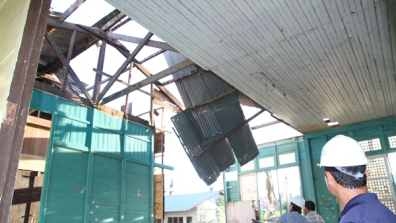Economic and Policy Developments
• Philippine economic growth accelerated to 7.2 percent in 2013 despite the impact of Typhoon Haiyan (Yolanda) and other natural disasters during the year. The country’s strong macroeconomic fundamentals supported domestic demand and shielded the economy from the lingering weakness of the global economy.
• Robust performance of consumption fueled by strong remittances and services, supported by investment and manufacturing expansion, boosted growth. Private consumption grew by 5.6%, while private construction also grew by 8 percent due to low interest rates and the strong demand for office & residential spaces by workers in the business process outsourcing industry.
• Philippine financial markets experienced large volatilities as investors responded to the tapering of the US stimulus program. Stock and bond prices fell significantly in June, August and December 2013. The outflow of portfolio investment contributed to the peso’s 12-percent nominal depreciation by year end. However, confidence in the domestic economy remained high and was recognized with a third credit rating upgrade to investment grade.
• Monetary and fiscal policy remained supportive of growth. With CPI inflation easing to 3 percent in 2013, policy rates stayed at low levels of 3.5 and 5.5 percent for the overnight borrowing and lending rates respectively. Government finances continued to improve with better tax administration and efficient spending. Revenue collection grew by about 12 percent.
Prospects, Risks and Policies
• The economy will likely sustain high growth in the medium term, amidst the challenging global environment and the impact of Typhoon Haiyan (Yolanda). Timely and efficient reconstruction spending can help offset the decline in GDP growth from the damage brought by Yolanda. Growth is projected at 6.6 percent in 2014 and 6.9 percent in 2015.
• Risks to growth include a slower global recovery, financial market volatilities related to tapering of the US stimulus program, potential bubbles in the real estate sector, slower post-typhoon reconstruction and domestic reform lags.
Building Back Better after Typhoon Haiyan (Yolanda)
• The Philippines needs to prepare for the increased risk of disasters brought about by climate change. The long-term risks of Typhoon Yolanda include a rise in unemployment and underemployment, increased poverty levels, and deteriorations in human capital indicators. An additional 1 million people could have been pushed into poverty.
• Given the country’s ongoing vulnerability to disasters, the key challenge of the reconstruction process will be to develop and enforce explicit standards for “building back better.” The strategy should identify standards for safe and resilient buildings and infrastructure, and for risk-informed land-use planning. During implementation, public participation and consultation, quality control, strict enforcement, and training will be essential in ensuring that prescribed standards are not compromised.
• Another key principle for the reconstruction program is to give households substantial control over how and where their houses are rebuilt, as this has proven to be the most effective and efficient approach in other post-disaster recovery programs.
Medium-term agenda: Working together to address the jobs challenge
• Despite higher growth, poverty incidence of the population barely improved from 26.3 percent in 2009 to 25.2 percent in 2012, suggesting that higher growth has yet to benefit many of the poor. Natural calamities brought about by climate change have also pushed millions of Filipinos into poverty.
• Underlying the slow progress in poverty reduction is the lack of good jobs. 75 percent of workers or some 28 million Filipinos are informally employed with little or no protection from job losses and opportunities to find gainful employment.
• The Philippine Development Report: Creating more and better jobs argues that the challenge of sustaining growth and creating more and better jobs will have to focus on raising the productivity of farmers and MSMEs. Reforms to protect property rights, enhance competition, simplify regulations and increase investment in infrastructure, health, and education are crucial for good job creation.
• A unique window of opportunity is open for an action-oriented and coalition-supported program on job creation.


